The year 1976 marked a significant milestone in American history – the bicentennial celebration of the United States of America.
To commemorate the 200th anniversary of the Declaration of Independence, the U.S. Mint released special edition coins, including the iconic Bicentennial quarters.
These quarters have captured the interest of collectors and numismatists due to their unique designs and historical significance.
In this comprehensive guide, we will delve into the world of Bicentennial quarters, exploring their history, design features, varieties, and, most importantly, their value in today’s market.
The Historical Significance of Bicentennial Quarters
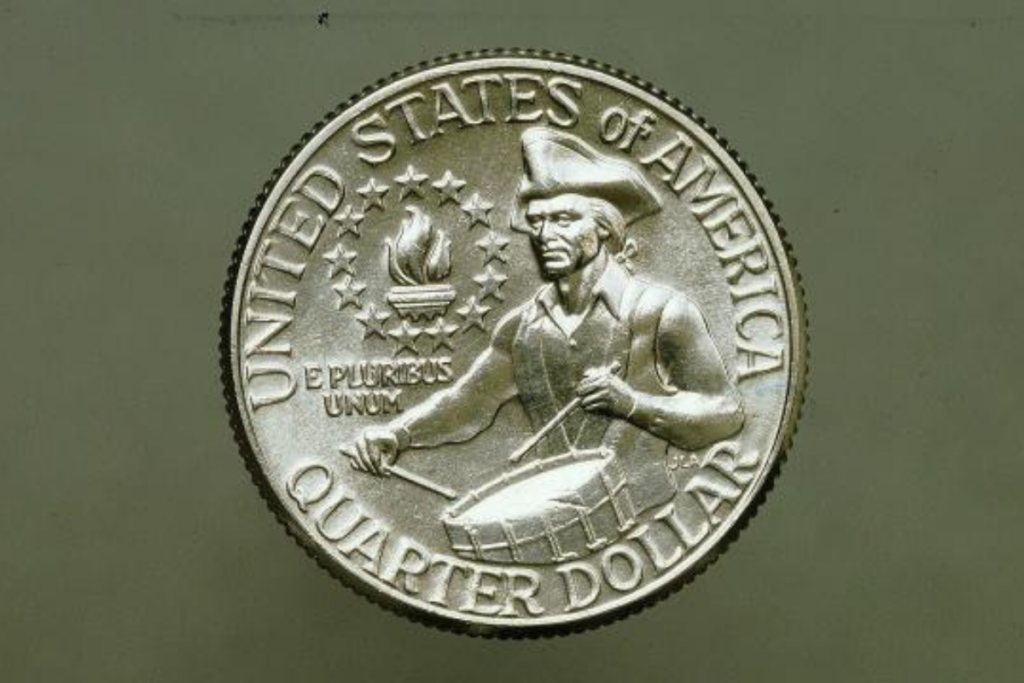
The Bicentennial quarters were minted to celebrate the 200th anniversary of America’s independence from British rule.
In 1973, Congress passed legislation authorizing the production of special designs for the quarter, half dollar, and dollar coins.
These coins were intended to be issued from July 4, 1975, through the end of 1976, ensuring their circulation during the nation’s bicentennial celebrations.
The decision to produce these commemorative coins was part of a broader effort to engage the public in the bicentennial festivities and to create lasting mementos of this historic occasion.
The Bicentennial quarters, with their distinctive designs, became an integral part of this celebration and continue to be cherished by collectors and history enthusiasts alike.
Design Features of Bicentennial Quarters
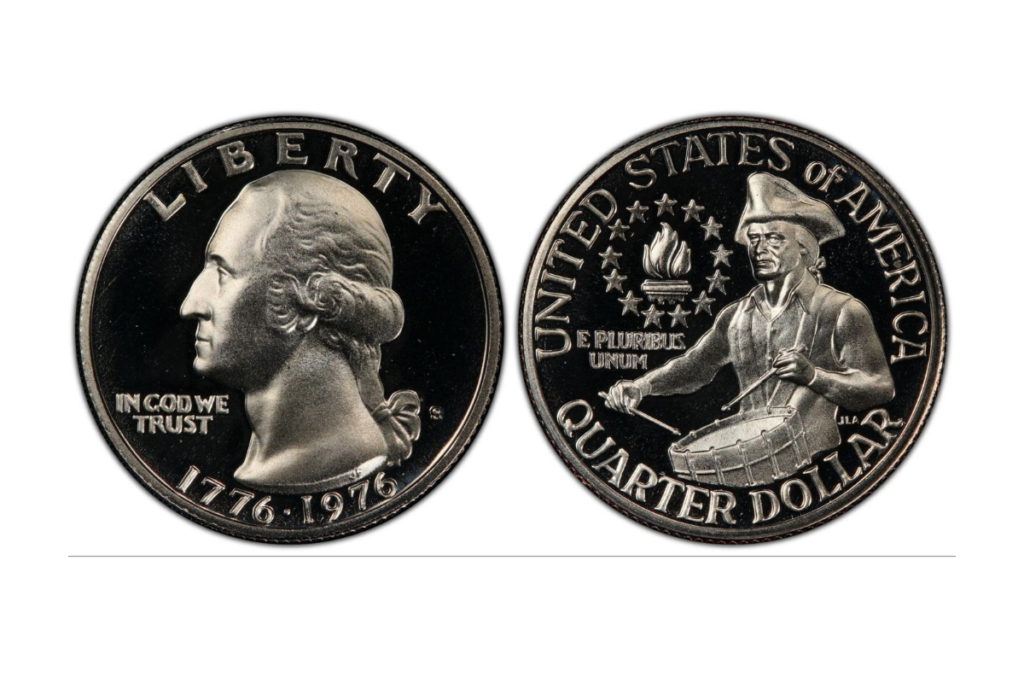
One of the most distinguishing features of the Bicentennial quarters is their unique reverse design.
Unlike the standard Washington quarter, which features an eagle on the reverse, the Bicentennial quarters showcase a special design created by Jack L. Ahr.
This design depicts a colonial drummer facing left, with a victory torch encircled by 13 stars to his right.
The inscription “E PLURIBUS UNUM” is prominently displayed above the drummer.
The obverse of the Bicentennial quarter retains the familiar portrait of George Washington, designed by John Flanagan.
However, there is a notable difference – the date “1776-1976” is inscribed below Washington’s portrait, replacing the traditional single-year date.
This dual-date feature immediately identifies the coin as part of the Bicentennial series.
Varieties of Bicentennial Quarters
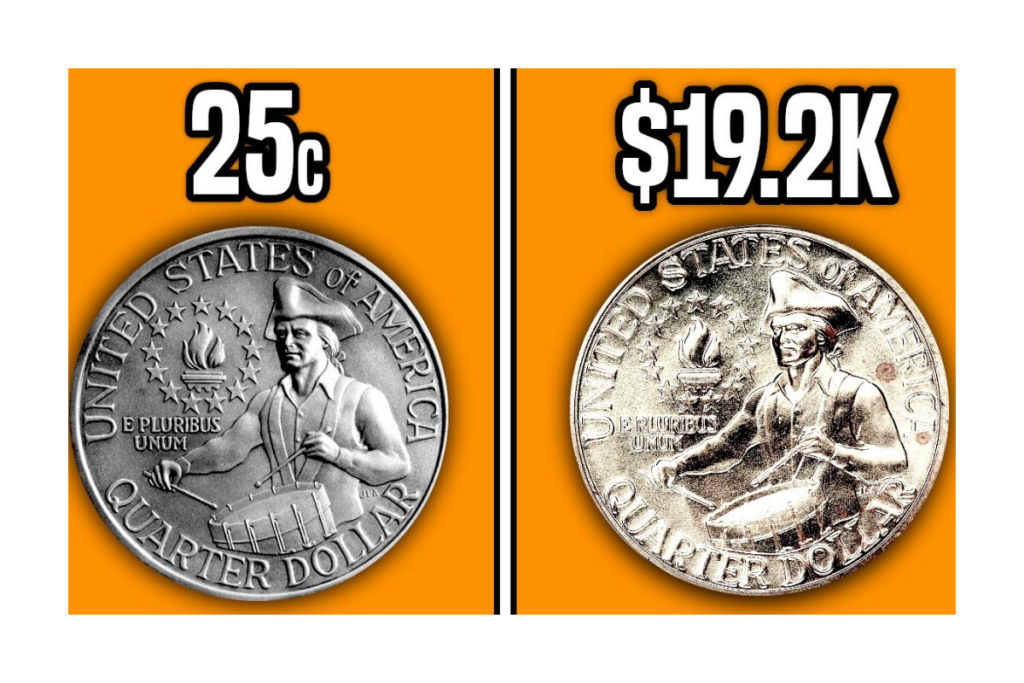
Bicentennial quarters were produced at three different mints: Philadelphia (no mint mark), Denver (D mint mark), and San Francisco (S mint mark).
The quarters from each mint can exhibit slight variations, and understanding these differences is crucial for collectors.
Philadelphia Mint
The Philadelphia Mint produced Bicentennial quarters without a mint mark.
These coins are often the most common and widely circulated.
Despite their prevalence, uncirculated examples can still hold significant value, particularly if they exhibit strong strikes and minimal wear.
Denver Mint
Bicentennial quarters from the Denver Mint bear the “D” mint mark.
Like their Philadelphia counterparts, these quarters were minted in large quantities and are relatively common in circulated condition.
However, high-grade uncirculated coins from the Denver Mint are sought after by collectors.
San Francisco Mint
The San Francisco Mint produced both circulation-strike and proof Bicentennial quarters, each with an “S” mint mark.
The proof coins were specially manufactured for collectors and were not intended for general circulation.
Proof Bicentennial quarters are known for their exceptional strike quality and mirror-like finishes.
These coins are often found in pristine condition and are highly prized by collectors.
Special Varieties and Errors
In addition to the standard Bicentennial quarters, there are several special varieties and errors that collectors should be aware of.
These varieties and errors can significantly impact the value of a coin, making them particularly intriguing for collectors.
Type 1 and Type 2 Varieties
Bicentennial quarters are known to exist in two distinct varieties, commonly referred to as Type 1 and Type 2.
The difference between these varieties lies in the design of the lettering on the reverse side of the coin.
Type 1: The Type 1 variety features thicker, more prominent lettering, particularly noticeable in the words “UNITED STATES OF AMERICA” and “QUARTER DOLLAR.” The Type 1 variety was struck in 1975.
Type 2: The Type 2 variety, struck in 1976, features thinner and more refined lettering.
The difference between the two types is subtle but discernible upon close inspection.
Collectors often seek to acquire both Type 1 and Type 2 Bicentennial quarters to complete their sets, adding an extra layer of interest and value to their collections.
Doubled Die Errors
Doubled die errors occur when a coin is struck more than once with a misaligned die, resulting in doubled images on the coin’s surface.
Bicentennial quarters with doubled die errors are rare and highly sought after.
These errors can appear on various parts of the coin, including the date, lettering, and design elements.
One notable doubled die error on Bicentennial quarters is found on the obverse, where the doubling is evident on the date “1776-1976” and the inscription “LIBERTY.”
Coins with these errors can command substantial premiums, depending on the severity and clarity of the doubling.
The Value of Bicentennial Quarters
Determining the value of Bicentennial quarters involves several factors, including the coin’s condition, mint mark, variety, and any errors it may exhibit.
Here, we will explore the value ranges for different types of Bicentennial quarters in various conditions.
Circulated Bicentennial Quarters
Circulated Bicentennial quarters, which have been used in everyday transactions, are generally the least valuable.
Their value is often close to their face value of 25 cents, especially if they show significant wear and tear.
However, even circulated coins can hold some value if they are in better-than-average condition or have certain varieties or errors.
Uncirculated Bicentennial Quarters
Uncirculated Bicentennial quarters, also known as “mint state” coins, have not been used in circulation and exhibit no signs of wear.
The value of uncirculated quarters can vary widely based on their grade, which is determined by factors such as luster, strike quality, and the absence of blemishes.
The Sheldon Coin Grading Scale, ranging from MS-60 to MS-70, is commonly used to grade uncirculated coins.
MS-60 to MS-63: Uncirculated Bicentennial quarters in these lower mint state grades may be worth a few dollars each.
MS-64 to MS-66: Coins in these grades are considered to be in above-average condition and can fetch higher prices, ranging from $10 to $50 or more.
MS-67 and Higher: Premium uncirculated quarters in grades MS-67 and above are rare and highly coveted by collectors.
These coins can command prices of $100 or more, depending on their quality and market demand.
Proof Bicentennial Quarters
Proof Bicentennial quarters, produced by the San Francisco Mint, are specially made for collectors and feature exceptional strike quality and mirror-like finishes.
Proof coins are typically sold in sets and are not intended for circulation.
Proof-65 to Proof-67: Lower-grade proof Bicentennial quarters may be worth around $5 to $10 each.
Proof-68 and Higher: Higher-grade proof quarters in Proof-68 and above can command prices ranging from $20 to $50 or more.
Special Varieties and Errors
Special varieties and errors can significantly enhance the value of Bicentennial quarters.
Collectors are often willing to pay a premium for coins that exhibit unique characteristics or rare errors.
Type 1 and Type 2 Varieties: Completing a set of both Type 1 and Type 2 Bicentennial quarters can add value to a collection.
Individual coins in uncirculated condition can range from a few dollars to $50 or more, depending on their grade.
Doubled Die Errors: Bicentennial quarters with doubled die errors are highly sought after by collectors.
The value of these coins can vary widely based on the severity and location of the doubling.
In some cases, doubled die errors can increase a coin’s value by hundreds of dollars.
Factors Influencing the Value of Bicentennial Quarters
Several factors can influence the value of Bicentennial quarters, and understanding these factors is crucial for collectors looking to buy or sell these coins.
Condition
The condition of a coin, often referred to as its grade, is one of the most significant factors affecting its value.
Coins in better condition, with minimal wear and strong strike quality, are generally more valuable.
Collectors often seek out coins with higher grades, as these coins are more visually appealing and rarer.
Mint Mark
The mint mark on a Bicentennial quarter can also impact its value.
Coins from the San Francisco Mint, particularly proof coins, are often more valuable than those from the Philadelphia or Denver Mints.
Additionally, some collectors aim to complete sets of Bicentennial quarters from all three mints, which can increase the demand and value of coins with specific mint marks.
Varieties and Errors
As previously mentioned, special varieties and errors can significantly enhance the value of Bicentennial quarters.
Collectors are often willing to pay a premium for coins that exhibit unique characteristics, such as doubled die errors or the Type 1 and Type 2 varieties.
Market Demand
The value of Bicentennial quarters, like all collectibles, is influenced by market demand.
Factors such as changes in collector interest, economic conditions, and trends in the numismatic market can all affect the value of these coins.
Staying informed about current market trends and collector preferences can help collectors make informed decisions when buying or selling Bicentennial quarters.
Tips for Collecting Bicentennial Quarters
For those interested in collecting Bicentennial quarters, here are some tips to help you build a valuable and enjoyable collection:
Research and Education
Before diving into the world of Bicentennial quarters, take the time to educate yourself about these coins.
Learn about their history, design features, varieties, and errors. Familiarize yourself with grading standards and market values.
The more you know, the better equipped you’ll be to make informed decisions as a collector.
Condition Matters
When collecting Bicentennial quarters, condition matters.
Aim to acquire coins in the best possible condition, as higher-grade coins are generally more valuable and visually appealing.
If you’re purchasing uncirculated or proof coins, consider having them graded by a reputable third-party grading service to ensure their quality and authenticity.
Variety and Error Hunting
Keep an eye out for special varieties and errors when collecting Bicentennial quarters.
These unique characteristics can add significant value to your collection and make it more interesting.
Look for Type 1 and Type 2 varieties, as well as doubled die errors, and consider adding them to your collection.
Complete Sets
Completing a set of Bicentennial quarters from all three mints – Philadelphia, Denver, and San Francisco – can be a rewarding goal for collectors.
Additionally, consider assembling sets of both Type 1 and Type 2 varieties.
Completing sets can add value to your collection and provide a sense of accomplishment.
Stay Informed
Stay informed about current market trends and collector preferences.
Monitor auction results, read numismatic publications, and participate in online forums and collector communities.
Staying up-to-date with market trends can help you make informed decisions and identify opportunities to buy or sell Bicentennial quarters.
Conclusion
Bicentennial quarters from 1976 hold a special place in American numismatic history.
These coins, minted to commemorate the 200th anniversary of the United States’ independence, feature unique designs and have become cherished collectibles.
Whether you’re a seasoned numismatist or a novice collector, understanding the history, varieties, and factors influencing the value of Bicentennial quarters can enhance your appreciation for these iconic coins.
By educating yourself, seeking out high-quality examples, and staying informed about market trends, you can build a valuable and enjoyable collection of Bicentennial quarters.
These coins not only serve as tangible reminders of America’s bicentennial celebration but also offer a fascinating glimpse into the world of numismatics. Happy collecting!
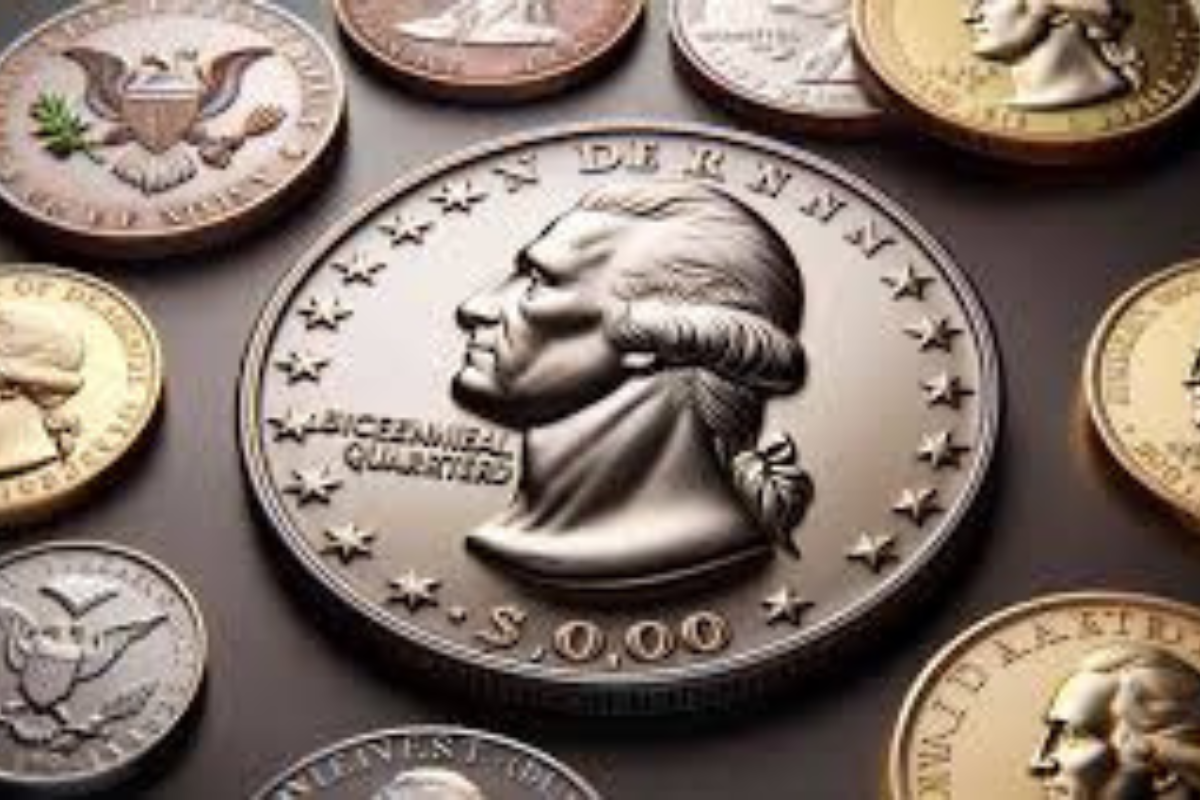
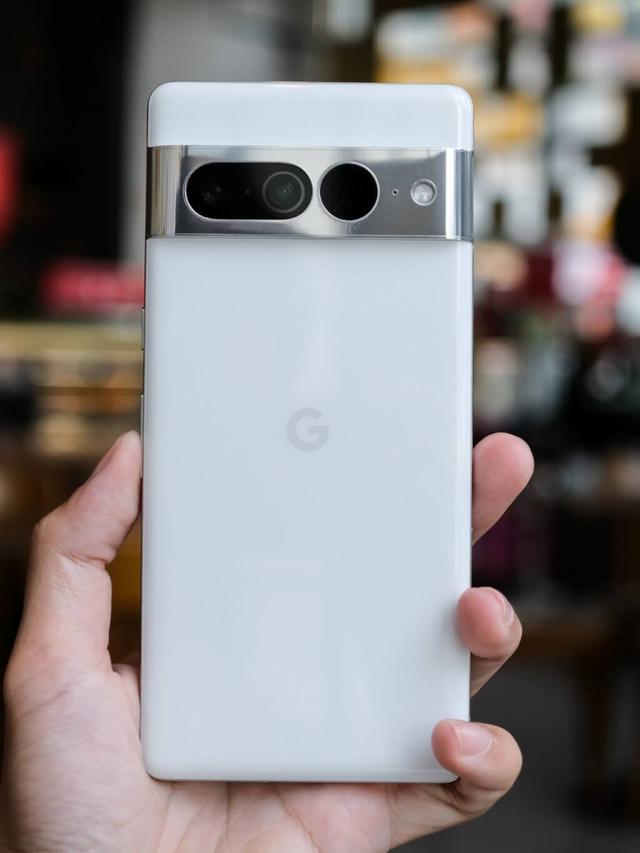

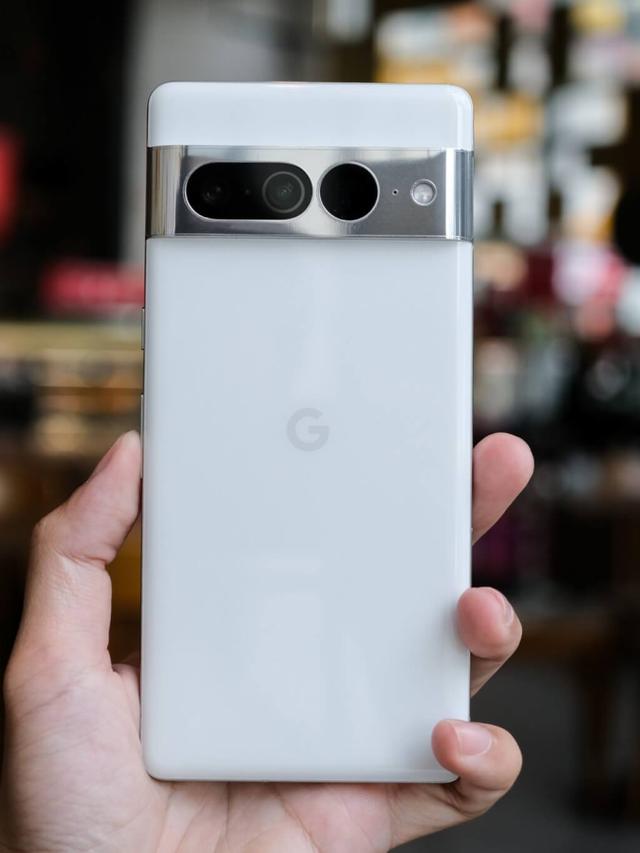

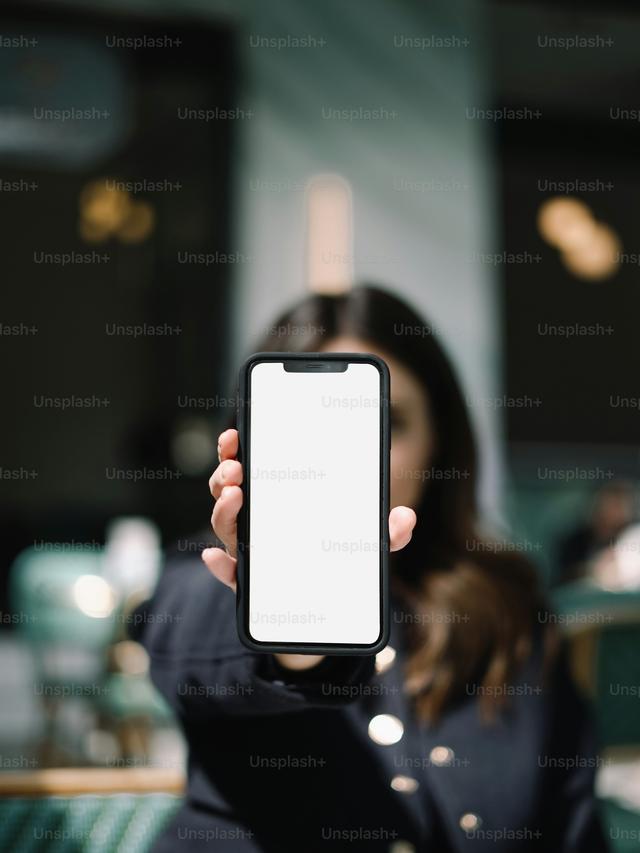
Leave a Reply